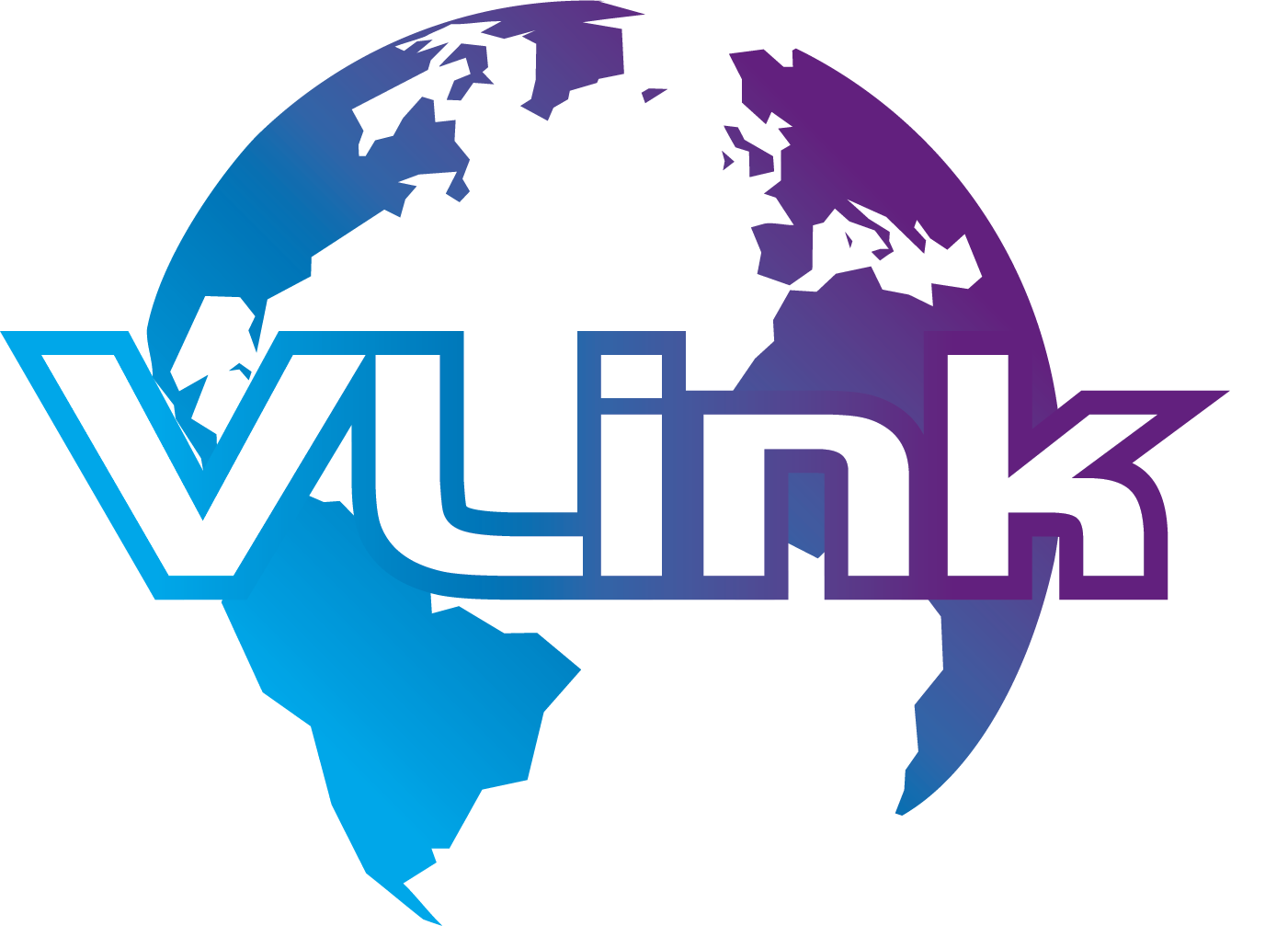In our journey as a cloud managed services specialist, mastering cloud cost optimization best practices became central to delivering value, boosting profitability, and elevating ROI for our US and Canadian clients. Achieving financial efficiency in the cloud isn't a one-time task; it's a discipline. Our success story serves as a case study in cloud cost optimization, offering a concrete blueprint.
This comprehensive playbook details our rigorous process, shares actionable strategies, and guides business owners through building a definitive cloud cost optimization roadmap that guarantees ongoing savings and operational excellence. If you're wondering how we cut cloud costs by a significant 30%, the answer lies in a proactive, FinOps-driven approach.
Understanding the Importance of Cloud Cost Optimization
Unoptimized cloud usage results in significant "cloud waste," which industry reports estimate impacts up to 30% to 35% of total cloud spend for businesses due to idle and underused resources. This waste isn't merely a line item; it's capital that could be redirected toward innovation, product development, or core business growth.
With leading platforms—AWS, Azure, and GCP—all providing dynamic pricing models and advanced optimization tools, enterprises must adopt robust cloud cost governance practices to avoid financial inefficiencies and maximize the benefits of Microsoft Azure, AWS, and GCP investments.
Statistics Spotlight: The Business Case for Optimization
- Enterprises typically waste 30-35% of their cloud budget due to idle and underused resources, unattached storage, and over-provisioned instances.
- 80% of organizations overspend on cloud services due to a lack of proper monitoring, optimization, and real-time visibility.
- Adopting cloud reserved instances, Spot Instances, and cloud shutdown automation can reduce costs by up to 50-70% for non-critical workloads, such as development and test environments.
- FinOps practices for cloud cost management are now a strategic imperative, with the market for FinOps solutions projected to grow significantly as companies move beyond simple monitoring to true financial accountability.
Why Cloud Managed Services Are Essential for Cost Control
For many enterprises, the sheer complexity of optimizing hundreds or thousands of resources across multiple clouds is a monumental task that internal teams, often focused on core product engineering, cannot manage alone. Cloud managed services empower enterprises to leverage the full spectrum of cost optimization opportunities, from strategic planning to hands-on, continuous execution.
In a complex, multi-cloud world, optimization isn't just about technical decisions; it's about integrating finance, engineering, and business strategy. This is the heart of FinOps, and a B2B cloud cost optimization for business owners requires this expertise.
Key areas where a specialized managed service provider delivers measurable cost benefits include:

- Proactive Cloud Resource Monitoring and Tagging: Establishing cloud resource tagging best practices from day one to ensure 100% cost attribution and accountability.
- Instance Rightsizing using AI: Utilizing sophisticated, platform-native tools like AWS Compute Optimizer, Azure Advisor, and GCP Recommender to identify resource bloat.
- Automated Lifecycle Management: Implementing cloud shutdown automation and scheduling shutdowns outside of business hours on the dev/test cloud to eliminate costly idle resources.
- Ongoing FinOps Reviews: Continuous cloud cost optimization assessment and review of usage to ensure maximum discount coverage via cloud savings plans and reserved instances.
- Multi-Cloud vs. Hybrid Cost Efficiency: Analysis to determine the most financially and operationally sound placement for every workload.
These interventions are indispensable for both optimizing costs and ensuring compliance, security, and agility; especially for businesses in highly regulated sectors such as finance and healthcare.
Case Study: How We Achieved a 30% Cloud Cost Cut
Our cloud cost optimization journey with a large US/Canadian-based FinTech client involved a comprehensive, three-phase approach across their hybrid AWS and Azure environments. The goal was not just to cut costs, but to establish a sustainable, repeatable model for cost management that would scale with their aggressive growth plans.

Phase I: Assessment and Cloud Cost Governance (Savings Impact: 5%)
The initial step was to achieve 100% financial visibility.
1. Mapped all Cloud Resources: We conducted a comprehensive inventory across all subscriptions and accounts, identifying significant opportunities for cloud waste reduction and elimination, including hundreds of unattached storage volumes and orphaned databases.
2. Established Cloud Cost Governance: We deployed enterprise-grade cloud cost optimization solutions that provided granular cost visibility and tracking at the department and project levels. A critical step was enforcing cloud resource tagging to establish clear resource ownership and cost attribution.
3. Identified Cost Anomalies: Using monitoring tools, we flagged environments with high, unexplained usage spikes, which were found to be caused by poorly configured logging services.
Phase II: Implementing AWS Cost Optimization Best Practices (Savings Impact: 13%)
The majority of the client's production workloads ran on AWS cost optimization best practices, making this the highest-impact area for optimization.
1. Cloud Instance Rightsizing with AWS Compute Optimizer
- We leveraged AWS Compute Optimizer to analyze 90 days of historical CPU and memory utilization data for all EC2 and RDS instances.
- Action: Recommended and executed instance rightsizing across 40% of the EC2 fleet, downsizing instances that were consistently running at less than 10% CPU utilization.
- Result: Reduced over-provisioning by a critical 15%, immediately impacting the compute bill.
2. Strategic Use of Spot Instances & Reserved Instances
- Spot Instances: We identified the client's non-critical, fault-tolerant workloads (e.g., batch processing, nightly analytics, CI/CD build pipelines) and transitioned them to utilize Spot Instances to reduce cloud costs.
- Reserved Instances & Savings Plans: For the steady-state production database and application servers, we locked in savings using cloud savings plans and reserved instances (specifically, 3-year No-Upfront Convertible RIs and Compute Savings Plans).
- Result: Realized savings of up to 60% on those specific workloads, a massive lever in the overall cost reduction.
3. Cloud Shutdown Automation
- We implemented cloud shutdown automation scripts (using AWS Lambda and Event Bridge) to power down all Dev and Test environments during dev environment hours (Monday to Friday, 7 PM to 7 AM, and all weekend).
- Result: Saved a predictable 12% on monthly costs by eliminating idle cloud resources cost savings during non-business hours.
Phase III: Sustaining Savings with FinOps (Savings Impact: 12%)
The final phase focused on process, culture, and ongoing refinement—the core of FinOps.
- Rigorous Cloud Resource Tagging: We enforced a policy that automatically flagged untagged resources for review and eventual termination, ensuring zero future "shadow IT" costs.
- FinOps Practice Integration: Established a cross-functional FinOps working group (Engineering, Finance, and Product) to review cloud cost monitoring tools for enterprise data weekly and to integrate cost-awareness into the development lifecycle.
- Storage Optimization: Transitioned cold and archival data in S3 and Azure Blob storage to Glacier and Archive tiers, respectively, leveraging storage-specific lifecycle policies.
Total Combined Savings: A Sustainable 30% Cost Cut.
This achievement freed up substantial capital for the FinTech client to invest in new compliance and security tooling, proving that cost optimization is directly tied to business agility.
AWS vs Azure vs GCP: Cost Optimization Comparison
While the core principles are universal, each major provider offers a distinct ecosystem and set of tools for enterprise cloud cost optimisation. A successful multi-cloud strategy means leveraging the unique benefits of Microsoft Azure cloud services alongside the mature offerings of AWS and the simplicity of GCP.
| Feature/Strategy | AWS | Azure | GCP |
| Instance Rightsizing | AWS Compute Optimizer (EC2, RDS, Lambda) | Azure Advisor (VMs, Databases) | GCP Recommender (Compute Engine, SQL) |
| Spot/Preemptible Instances | EC2 Spot Instances | Azure Spot VMs | Preemptible VMs / Spot VMs |
| Reserved/Savings Plans | Reserved Instances/Savings Plans (most aggressive discounts) | Reserved VM Instances, Azure Hybrid Benefit (license portability) | Committed Use Discounts (CUDs - simpler, automatic discounts) |
| Monitoring & Tagging Tools | AWS Cost Explorer, CloudWatch, Tags | Azure Monitor, Resource Tagging, Cost Management + Billing | Google Cloud Monitoring/Labels, Billing Dashboards |
| Cloud Shutdown Automation | Lambda, CloudFormation, Instance Scheduler | Azure Automation, Logic Apps | Cloud Functions, Deployment Manager |
| Key Cost Differentiator | Broadest ecosystem, deepest reserved discounts, highly granular control. | Seamless hybrid integration, massive value from license portability. | Automated sustained use discounts, simplicity, superior for elastic/analytics. |
The most effective cloud cost optimization strategies for businesses involve aligning the right workload with the right platform's cost-saving levers. While we cover optimization across all major clouds, Azure offers specific financial advantages that are particularly compelling for enterprise markets, especially those with existing Microsoft investments.
- Azure Hybrid Benefit: This is a significant cost-saver, enabling customers to utilize their existing on-premises Windows Server and SQL Server licenses on Azure Virtual Machines, resulting in potential savings of up to 40% on Azure VMs and up to 80% on SQL Server licenses compared to pay-as-you-go rates.
- Azure Advisor: Provides AI-driven recommendations not just for right-sizing, but also for security, reliability, and operational excellence, giving a holistic view of platform health.
- Integrated Compliance and Security: Azure's robust, integrated controls appeal to highly regulated sectors, such as finance and healthcare, reducing the need for costly third-party compliance tooling.
Cloud Cost Optimization Best Practices to Reduce Cloud Costs
A successful cloud cost optimization assessment leads directly into a clear, phased roadmap. This ensures that optimization efforts are continuous and iterative, guaranteeing maximum return on investment. Achieving and maintaining a 30% cost reduction requires a structured, multi-faceted approach.
Here are the cloud cost optimization best practices that form the foundation of our cloud cost optimization for business owners.

1. Cloud Instance Rightsizing and Continuous Assessment
This is the single most accessible way to eliminate over-provisioning.
- Principle: Continuously assess utilization metrics (CPU, memory, disk I/O, network) to resize instances to actual requirements. Most enterprises pay for resources they never use.
- Action: Leverage native, AI-driven tools (AWS Compute Optimizer, Azure Advisor, GCP Recommender) for data-backed recommendations.
- Goal: Avoid the common trap of provisioning based on peak theoretical load, instead matching the instance size to the average, sustained demand.
2. Strategic Use of Spot and Reserved Instances
This strategy optimizes the rate you pay for compute capacity.
- Interruptible Workloads: Spot/Preemptible Instances are ideal for non-mission-critical, interruptible, or stateless workloads (e.g., big data processing, containerized scaling groups, CI/CD pipelines). They offer the steepest discount—up to 90% off on the On-Demand rates.
- Predictable Workloads: Cloud Reserved Instances (RIs) and Cloud Savings Plans (AWS) or Committed Use Discounts (GCP) deliver predictable, substantial cost reduction (up to 70%) for steady-state databases, application servers, and core infrastructure that runs 24/7/365.
3. Scheduling Shutdowns for Dev/Test and Non-Critical Workloads
Eliminate the cost of resources that sit idle for 50-70% of the week.
- Cloud Shutdown Automation: Implement automated scripts to halt non-production environments (Dev, Test, QA, Staging) during evenings, weekends, and holidays.
- Action: Focus on scheduling shutdown of non-business hours dev/test cloud instances, which do not need to be available 24/7. This simple automation delivers instant, measurable savings.
4. Enforce Cloud Resource Tagging Best Practices
A clear cost governance framework starts with accurate tagging.
- Policy: Develop a comprehensive, mandatory cloud resource tagging policy. Tags should include Business Unit, Owner, Project Code, and Environment (Dev/Test/Prod).
- Impact: This facilitates organized cloud resource monitoring, reporting, and the ability to implement a granular chargeback or show back model, fostering accountability across engineering teams.
5. Continuous Monitoring and FinOps Practices
Optimization is an ongoing lifecycle, not a one-time project.
- Tools: Deploy advanced cloud cost monitoring tools for enterprises (e.g., CloudWatch, Azure Monitor, GCP Operations, and third-party solutions) to detect excess spending and set anomaly alerts in real-time.
- Governance: Regular FinOps practices for cloud cost management reviews are vital. This ensures that the financial implications of every architectural decision are understood and aligned with business value.
Advanced Cloud Cost Optimization Strategies for Businesses
Once the fundamentals are in place, enterprise cloud cost optimization shifts to strategic, cultural, and architectural levers.
1. FinOps Practices for Shared Accountability
FinOps (Financial Operations) is the cultural practice that integrates cost management as a shared responsibility across IT, finance, and product teams.
- Inform, Optimize, Operate: FinOps aligns optimization goals with business objectives, fostering financial transparency and accountability.
- Unit Economics: Teams measure and report cloud spending not just in dollars, but in cost per user, cost per transaction, or cost per API call, directly linking spend to business value.
2. Cloud Waste Identification and Elimination
This focuses on removing resources that provide zero business value.
1. Idle Cloud Resources Cost Savings: Deploy automated scanning tools to find unused resources, such as:
- Orphaned IPs: Elastic IPs not attached to an instance.
- Unattached Storage: EBS volumes or Azure managed disks not connected to a VM.
- Underutilized Databases: RDS or Azure SQL instances with near-zero connections.
2. Action: Immediately remove, consolidate, or repurpose these resources to eliminate actual cloud waste.
3. Multi-Cloud vs Hybrid Cost Efficiency
The choice of environment has profound cost implications.
- Multi-Cloud: Offers flexibility and leverage against vendors but increases complexity and often requires a dedicated third-party tool for unified visibility and control.
- Hybrid Cloud: Leveraging Azure Hybrid Benefit for Windows Server and SQL Server licensing enables organizations to migrate legacy workloads to Azure at a significantly reduced rate, while balancing the scale of the public cloud with the cost discipline of on-premises infrastructure. This model often results in greater cloud cost savings for non-critical workloads during the transition phase.
Cloud Cost Optimization Solutions and Companies
While in-house expertise is valuable, leveraging technology from leading cloud cost optimization companies is essential for scale and automation.
| Solution Category | Key Solution Examples | Value Proposition for Enterprises |
| Native Provider Tools | AWS Cost Explorer, Azure Cost Management + Billing, GCP Billing Dashboards | Granular data, direct integration, foundation for all cost analysis. |
| Rightsizing & Recommenders | AWS Compute Optimizer, Azure Advisor, GCP Recommender | AI/ML-driven analysis of usage patterns to find the exact resource size needed. |
| Third-Party FinOps Platforms | Cloud Health (by VMware), Cloud Checker (by Spot by NetApp), Flexera One | Multi-cloud visibility, advanced automation (auto-scheduling, commitment purchasing), cost allocation, and reporting. |
| Automation & Scheduling | AWS Lambda/Scheduler, Azure Automation, Instance Scheduler (open-source or managed) | Implementation of cloud shutdown automation and auto-scaling rules. |
Real-World Examples of Cloud Cost Optimization
These success stories illustrate the power of adopting these best practices:
- Fintech Client (US): A FinTech firm with heavy daily batch jobs realized they were paying peak prices for compute. They moved all batch processing and daily reporting to Spot Instances with strong checkpointing. This, combined with cloud instance rightsizing across their EC2 and Azure VM fleets, resulted in a sustained 32% cut in their combined cloud bill.
- Global Media Company (Canada): This company's most enormous waste was unmanaged development and test environments. They implemented a rigorous cloud shutdown automation policy; powering down everything not tagged as 'Production' outside of 8 AM to 6 PM. The savings from scheduling shutdown of non-business hours dev/test cloud instances alone accounted for 40% off their non-production cloud spend, freeing up budget for new global expansion.
- SaaS Firm (Enterprise): This organization lacked any governance, with cost visibility scattered across dozens of spreadsheets. They adopted a rigorous cloud resource tagging and cloud cost governance framework. By cleaning up idle cloud resources cost savings (orphaned IP addresses, unattached disks) and consolidating underutilized resources, they achieved a 27% annual saving and, crucially, gained full budget visibility and accountability.
Choose VLink Expertise for Cloud Managed Services
You have seen the cloud cost optimization best practices that yield massive results: cloud instance rightsizing via AWS Compute Optimizer, disciplined use of cloud reserved instances and Spot Instances, and the power of cloud shutdown automation.
However, for business owners in the US and Canada running large, complex, or multi-cloud vs hybrid environments, executing these strategies continuously and at scale is nearly impossible without expert support. Choosing the right cloud cost optimization companies is the difference between achieving a one-time discount and implementing a sustainable 25-30% saving.
VLink specializes in transforming the complex, often reactive, nature of cloud billing into a proactive, transparent, and financially governed system. Our approach is distinct, focusing on:

- Guaranteed Accountability and FinOps Integration: Our dedicated team goes beyond simple monitoring. We integrate FinOps practices for cloud cost management directly into your engineering and finance workflows, establishing transparent cloud cost governance and cross-functional ownership of the cloud budget.
- Advanced Automation & Cloud Waste Elimination: Our proprietary automation stacks enforce cloud resource tagging best practices, automate the detection and elimination of idle cloud resources for cost savings, and manage granular schedule shutdown non-business hours dev/test cloud policies across AWS, Azure, and GCP.
- Cross-Cloud Rate Optimization: We manage and optimize your commitment vehicle portfolio, including cloud savings plans, reserved instances, and deep utilization of Spot Instances, across all major providers to ensure every workload is running at the optimal rate, protecting you from vendor lock-in.
- Security and Compliance: For highly regulated US and Canadian sectors (like FinTech and Healthcare), our cost optimization is seamlessly integrated with security best practices, ensuring cost-cutting never introduces compliance risk or technical debt.
By partnering with Vlink, you gain an extension of your team—senior, specialized experts who treat your cloud budget with the same rigor and strategic focus you apply to core business development.
Conclusion: Turning Cloud Cost Control into a Competitive Edge
The journey detailed in this case study of cloud cost optimization, which resulted in a definitive 30% reduction in cloud costs for our client, is more than just a story of expense reduction. It is a powerful example of how we cut cloud costs by aligning technology spending with strategic business value.
The transition from a passive consumer of cloud services to an active manager of cloud economics—the core of enterprise cloud cost optimization—is non-negotiable for future profitability. Uncontrolled cloud spend is the single greatest threat to your digital transformation ROI, representing lost potential and unnecessary risk.
By embracing continuous cloud cost optimization assessments, utilizing platform tools such as AWS Compute Optimizer and Azure Advisor, and enforcing robust automation for identifying and eliminating cloud waste, you can unlock significant hidden capital.
The most successful business owners view cloud optimization not as a burden, but as a discipline that enhances agility, predictability, and competitive advantage. Your next step shouldn't be another internal audit, but securing the specialized, continuous cloud managed services expertise necessary to guarantee and sustain these savings year after year.
Ready to lower your enterprise cloud costs by a guaranteed measurable percentage and maximize your digital ROI? Our B2B cloud cost optimization approach for business owners begins with a complimentary cloud cost optimization assessment, specifically designed for the relevant market. We will identify immediate savings, expose hidden waste, and prepare your cloud cost optimization roadmap for long-term financial control.
Contact us now to unlock savings, gain complete control over your multi-cloud environment, and redirect capital toward innovation.










 Shivisha Patel
Shivisha Patel

















